- Home
- Agriculture
- Products
- Greenhouse film
Crystal-clear films
Diffusing films
Thermic films
Celloclim®: bubble films with cooling effect
Sulphur Resistant films
Diamant® film range : unlimited sulphur resistance
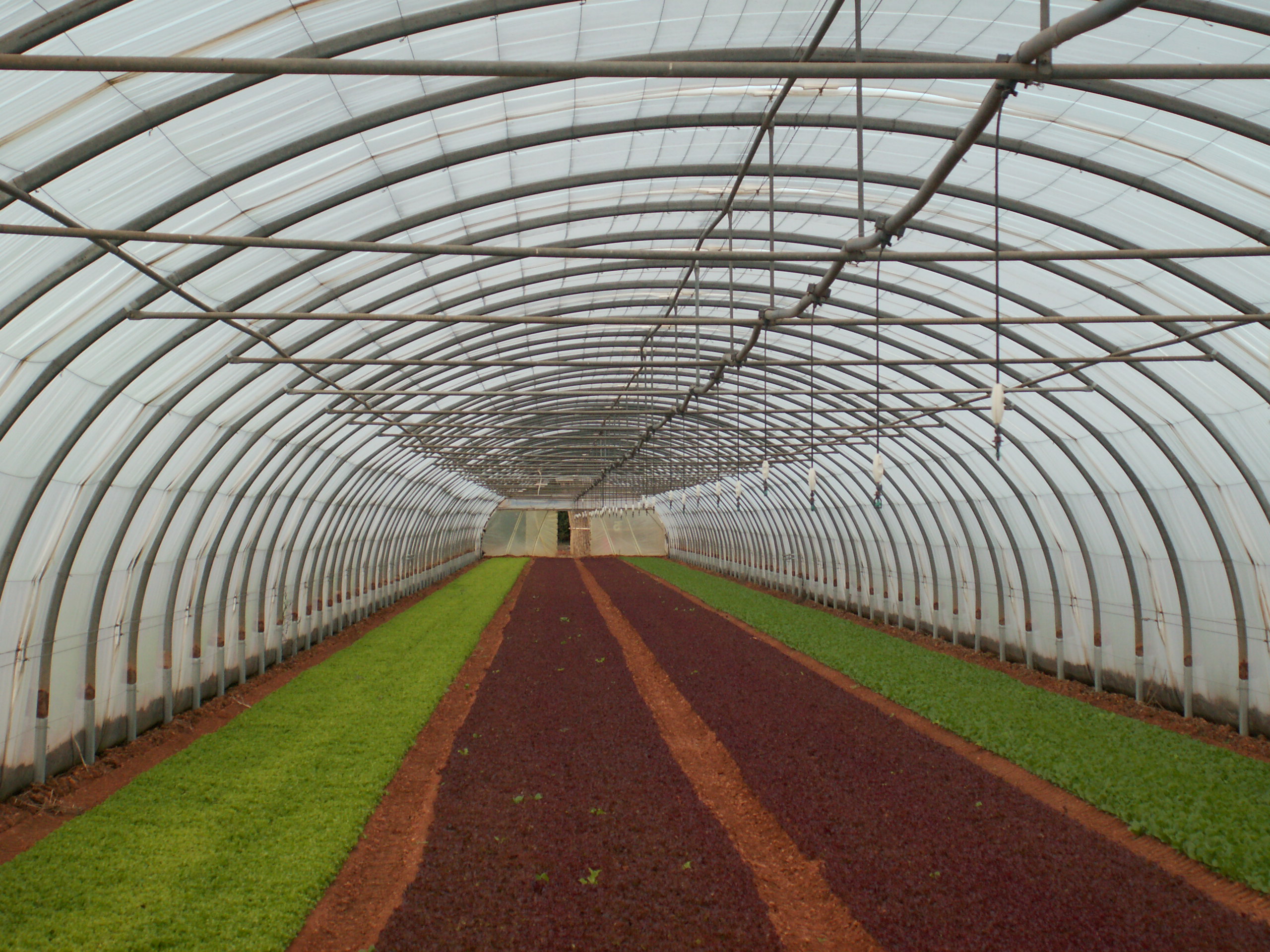
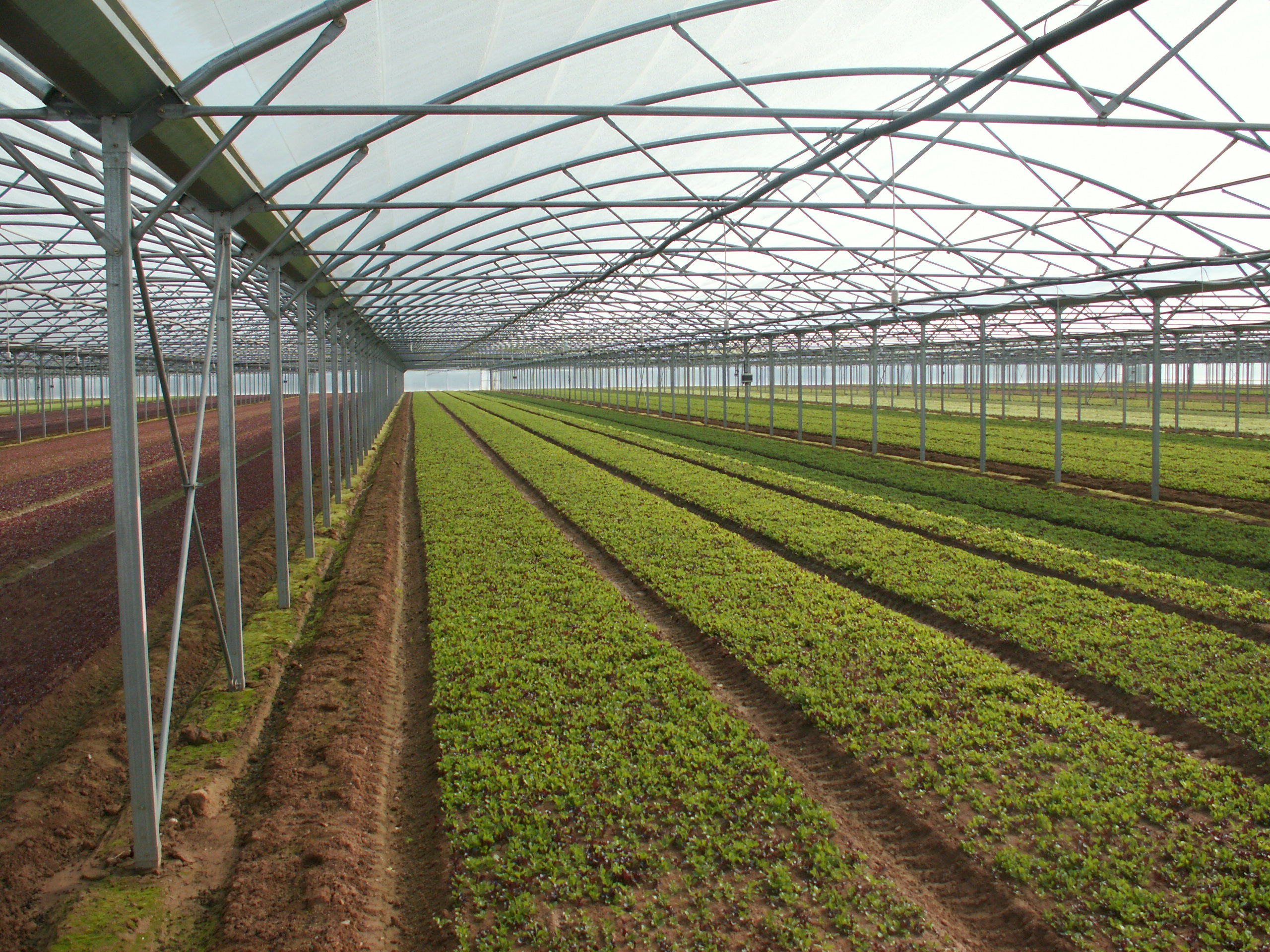

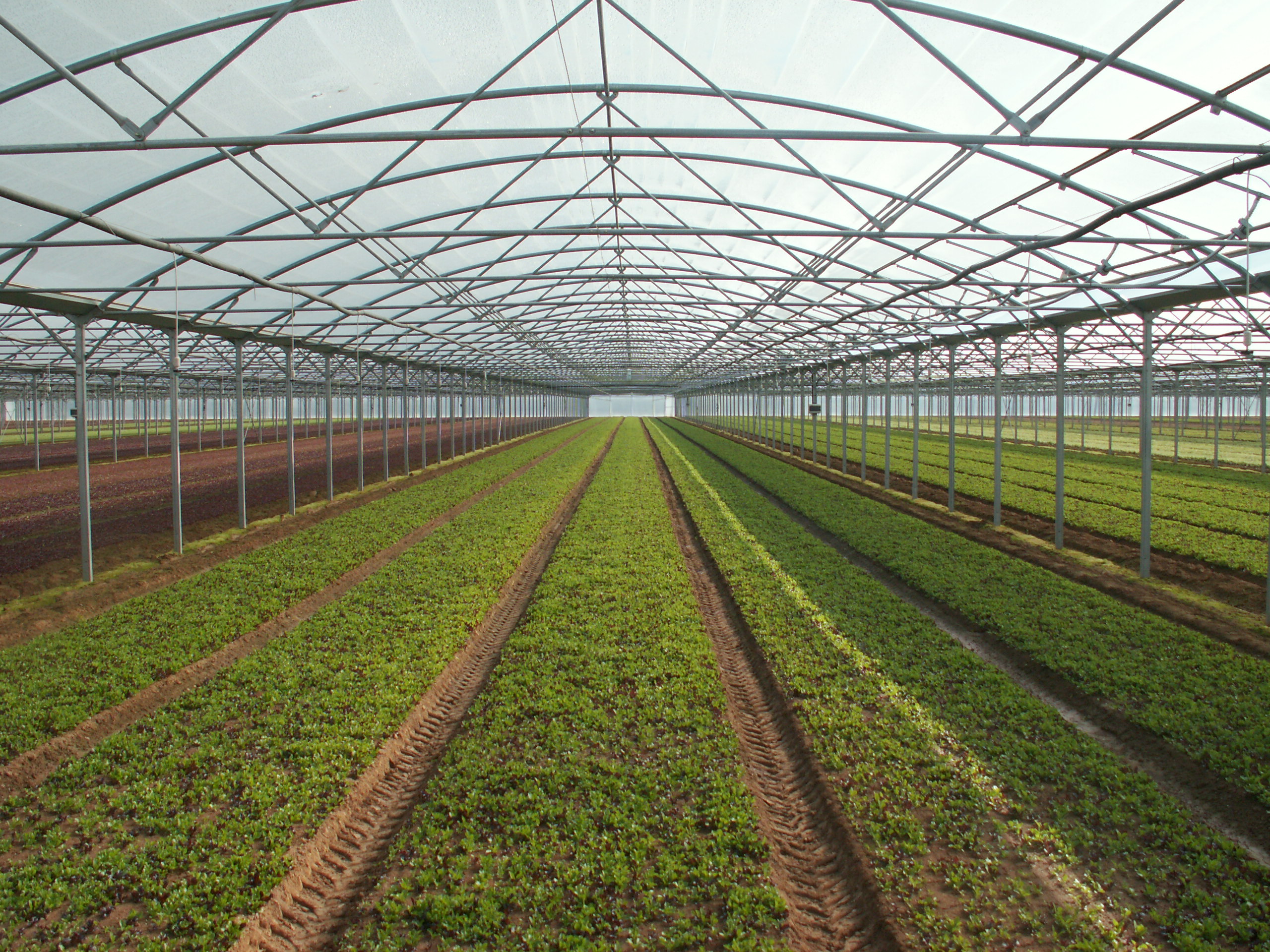
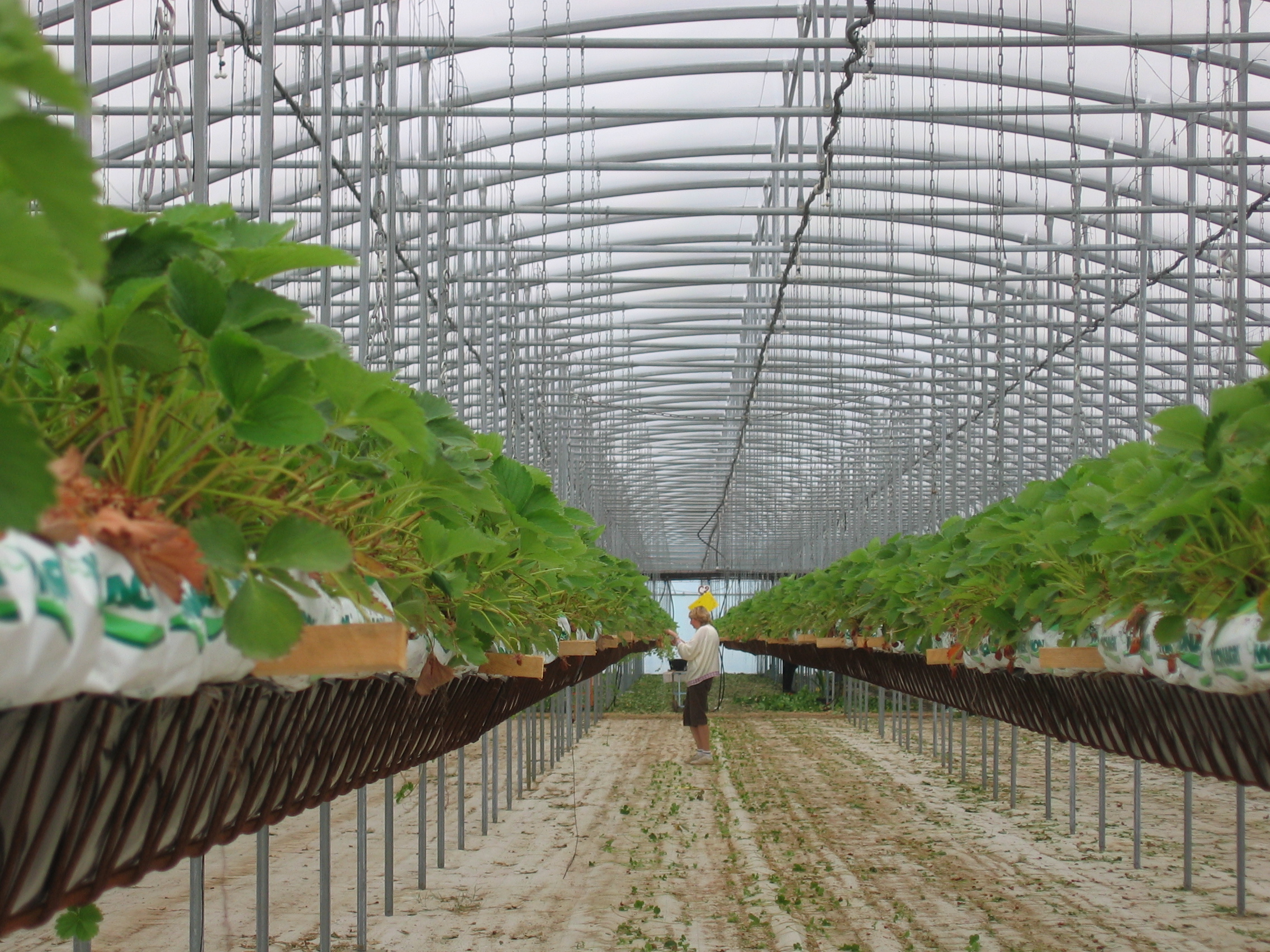
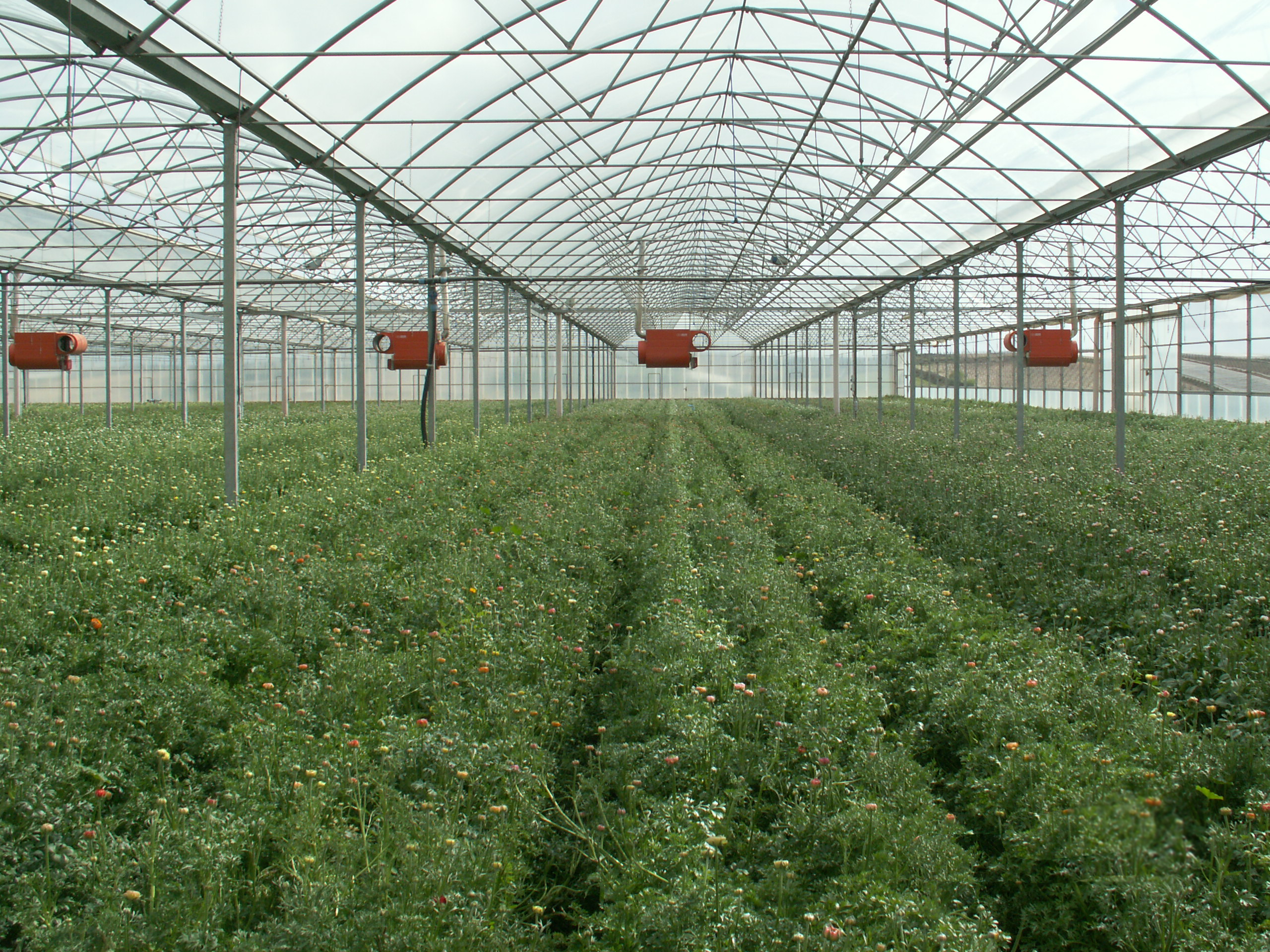
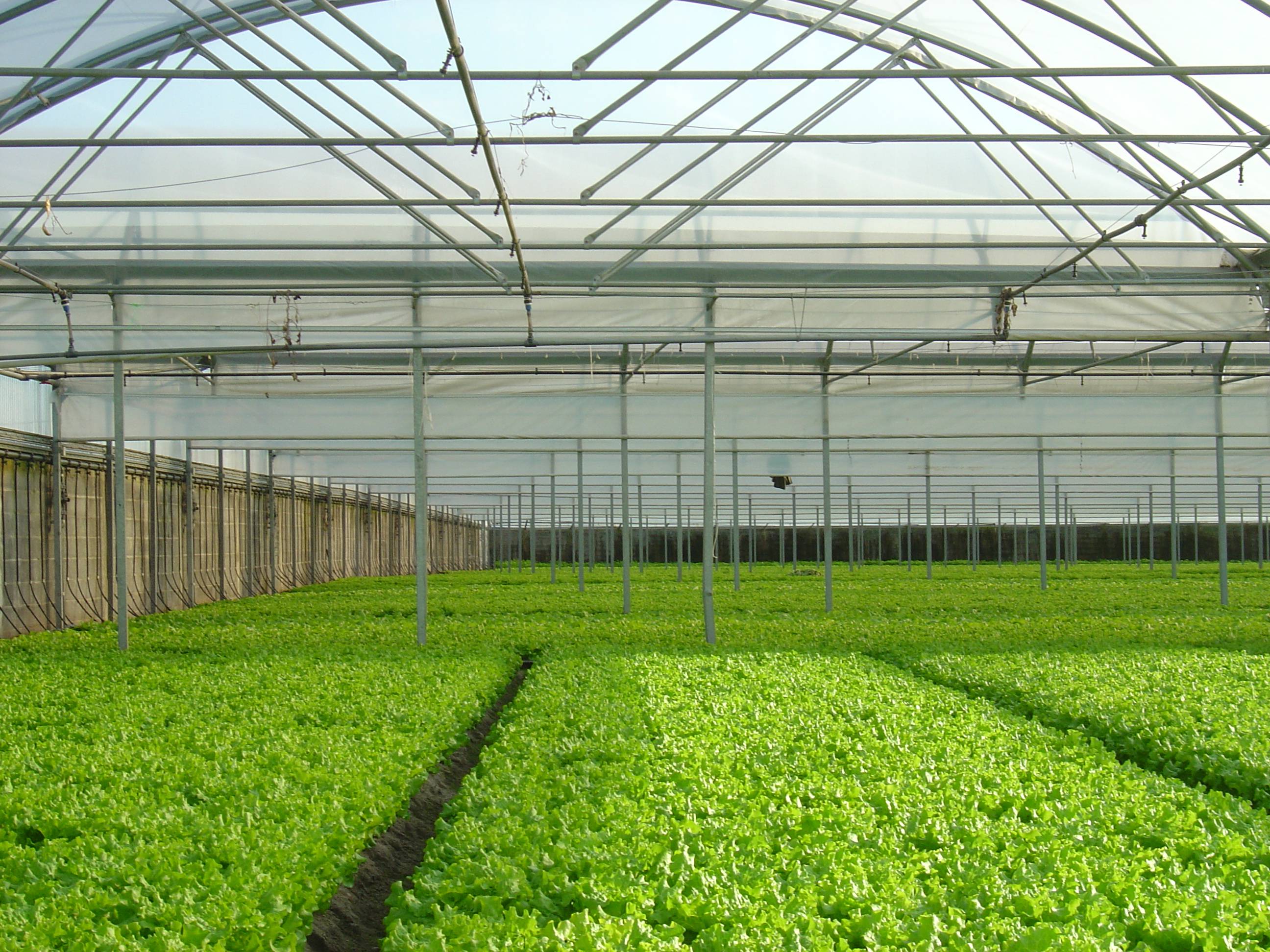


As a key element of every greenhouse, the covering film plays a significant role and assists farmers in the regulation of growth, phytosanitation, regulation of harvesting times and in the saving of energy and water. We develop and produce greenhouse films that are renown in the agricultural field for their unique attributes and functions that are achieved with a careful selection of raw materials and additives of the highest quality.
Film effects
The lifetime of a film depends on the quality and technical characteristics of the raw materials used, the good practices during extrusion, the quality assurance systems that are in place and the climate and general conditions of use (area, greenhouse type, installation, use of agrochemicals).
Agripolyane greenhouse films can offer a long lifespan utilizing specially developed UV-stabilizer packages that protect the products for long periods of time against exposure to UV-radiation and heat.
In-house produced additives securing consistent quality, combined with more than 60 years of experience in the sector ensure that Agripolyane greenhouse films last longer than expected.


AGRIPOLYANE developed a new generation of super-tough films using special high-strength polymers. These films offer additional safety in areas with very strong winds, or significant economy as they can be produced at lower thicknesses than regular films, while maintaining the same or still higher strength.
The superior mechanical properties of Agripolyane’s greenhouse films are also guaranteed by the strict quality control protocols that are in place during the manufacturing process.
AGRIPOLYANE offers special thermic films, containing a combination of EVA (Ethylene-vinyl acetate) copolymers and Infra-Red absorbing additives that are skilfully structured in the layers of these products. This combination results in energy retention and eventual reduction of heat losses from the greenhouse during the night.
The advantages of thermic films are:
|
Smoother temperature drop and overall higher night temperatures | Lower energy need for heating |
|
Earlier harvesting | Better quality of crops |
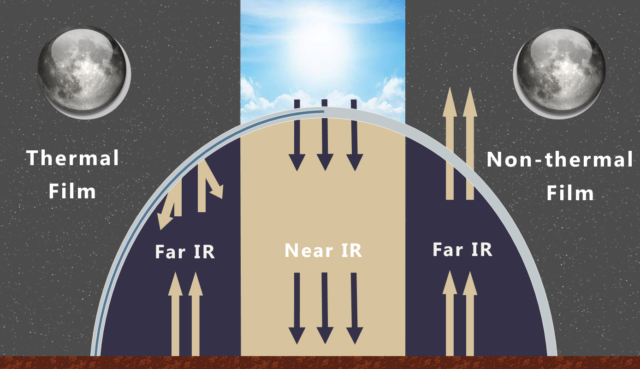
Higher levels of humidity and water condensation inside the greenhouse cause the formation of water droplets on the inner surface of the greenhouse film. These droplets have negative consequences on plant quality and growth, because they reduce light transmission by up to 30% and increase the incidence of certain diseases when they fall on the leaf surface.
The anti-dripping products of AGRIPOLYANE contain special additives that eliminate these droplets, transforming them into a continuous thin layer of water that runs down the sides of the greenhouse.
These films, when used properly, offer the following benefits:
| More light in the greenhouse | Higher crop yield | Earlier harvesting |
| Better quality of crop, higher commercial value | Fewer diseases | Reduced need for pesticides |
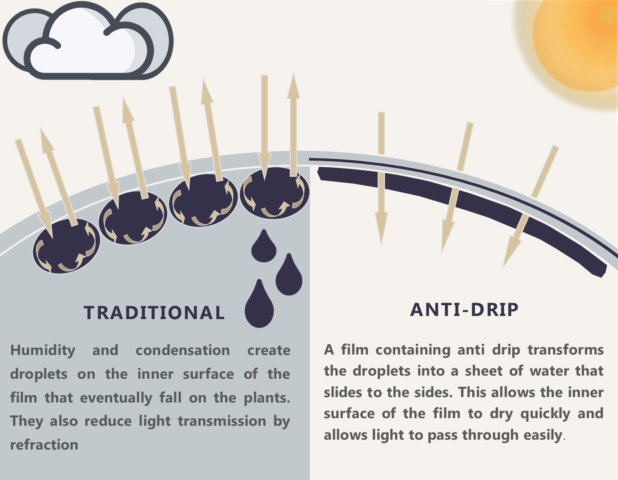
Shading films refer to a range of products that manipulate the quantity of light that enters the greenhouse, creating a shadow effect. The levels of light entering the greenhouse (or the intensity of the shade) can be regulated to various levels upon customer request.
Celloclim® is a patented brand name of Agripolyane since 1998. It is a multilayer film with micro-bubbles in the center layer of the product, offering the best thermal insulation at night, and a cooling effect during the warmer days. Micro-bubbles provide a cooling effect that comes as a result of:
→ The reflection and diffusion of light through the body and from the surface of the film,
→ The absorption by the film of the near IR transmission.
This mechanism can result in temperature differences of up to 6°C between Celloclim® and a regular greenhouse film during the hotter days. The diffusion also caused by the bubbles minimizes the shaded area inside of the greenhouse that comes from the plants or the structural elements.
Celloclim® exists in several versions for floriculture (Climarose®, Climawhite®, Climacolor, etc.) and horticulture (Celloclim®, Deltaclim, Hortyclim®, etc.).

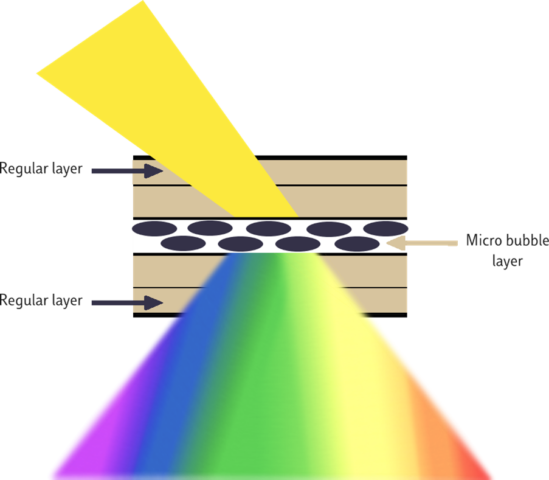
UV-blocking films are designed in an effort to prevent fungal diseases (Botrytis, Powdery Mildew, Sclerotinia) and to reduce the population of insects that cause structural damage to the plants or spread viruses. These films can block UV radiation up to 390 nm. UV blocking films also prevent petal blackening on red rose varieties.
This particular type of film is not suitable for every culture. Customers should contact AGRIPOLYANE for further advice.

With this range of products, we refer to films that manipulate the part of the light spectrum below 400 nm. Even though not crucial to photosynthesis, UV light is important for:
UV-open films of AGRIPOLYANE allow UV transmission from 300 nm. The products that belong to this range are crop specific and require special advice from agronomists before their use. Customers are advised to contact AGRIPOLYANE for advice.

The use of sulphur in greenhouse cultivation has increased in the last years and is expected to increase further in the years to come. Even though a powerful weapon in the hand of the farmer against disease, sulphur is also extremely harmful to plastic as it “attacks” and neutralizes the UV stabilizers incorporated in the film formulae. With the stabilizing packages neutralized, the film lifespan reduces dramatically.
AGRIPOLYANE sulphur resistant range of products utilizes specially developed UV stabilizers that either improve sulphur resistance of the film to very high levels or are completely unaffected by sulphur use. To the later, belongs our DIAMANT® product range.
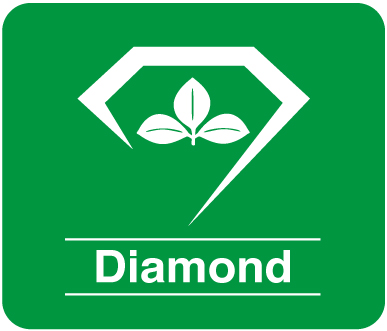
The Diamant® range greenhouse films are made with last generation UV stabilisers, ensuring an unlimited sulphur resistance as well as an excellent light transmission. This AGRIPOLYANE innovation is a world exclusive, made from unique additives developed and produced within our group.
Contact AGRIPOLYANE to select the DIAMANT® for you.
Light from the sun passing through a greenhouse film and entering a greenhouse is split into direct and diffused. Light diffusion causes a film to look hazy to human eye-this doesn't mean, however, that the film is less transparent. The PAR (photosynthetic active radiation) received by plants is practically the same.
Light diffusion reduces shadows, ensures more uniform distribution of light in the greenhouse so that it reaches even the lower parts of the plants, prevents burnings on leaves and fruits and in the case of very high diffusing films, provides a moderate cooling effect.
Agripolyane offers films with various levels of diffusion according to the specific needs of each area and crop.

Our Crystal-Clear films are globally distinguished for their minimal haze and their transparent glass-like appearance, that is combined with remarkable strength and flexibility. Crystal clear films are recommended for any crop in areas with low level of sunshine or as one of the two films on double inflated greenhouses.

* Please contact Agripolyane and its distributors to get usual conditions of installation and use.
| Cookie | Durée | Description |
|---|---|---|
| cookielawinfo-checkbox-necessary | 11 months | The cookies is used to store the user consent for the cookies in the category "Necessary". |
| cookielawinfo-checkbox-performance | 11 months | The cookie is used to store the user consent for the cookies in the category "Performance". |
| viewed_cookie_policy | 11 months | The cookie is used to store whether or not user has consented to the use of cookies. It does not store any personal data. |
| Cookie | Durée | Description |
|---|---|---|
| Session storage | 11 month | This cookie is used to save your choices for the duration of your navigation during a session. |
